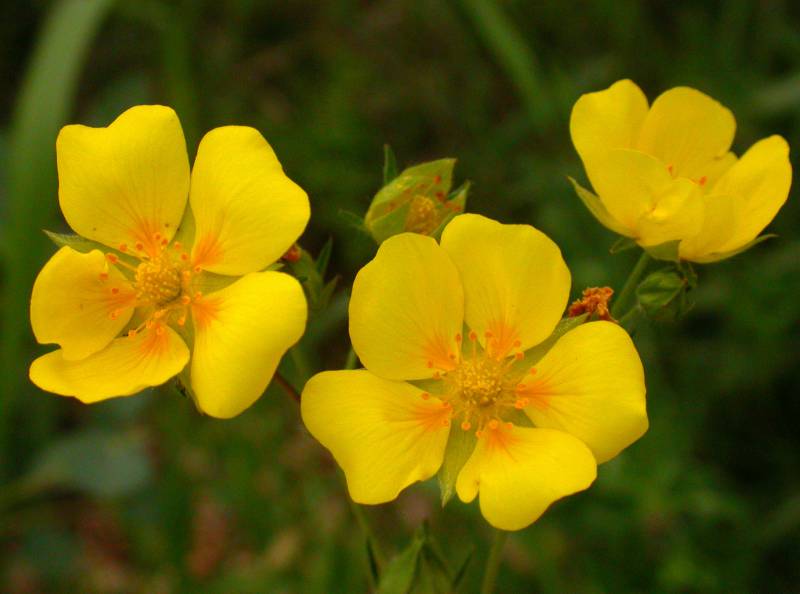Potentilla supina
Potentilla gracilis
bushy cinquefoil
slender cinquefoil
Leaves pinnate, the lower ones with 2-4 pairs of elliptic to oblong leaflets with rounded serrations, 1-3 cm. long, the upper sometimes ternate;
stipules well-developed.
Basal leaves numerous, with petioles to 3 dm. long, palmately divided; the leaflets 7-9, broadly oblanceolate to oblong-elliptic, varying from glabrous and green on both surfaces to hairy above and white-woolly below, toothed to deeply dissected;
cauline leaves 1-2, reduced;
stipules up to 2.5 cm. long, entire to lacerate.
Flowers solitary on long peduncles from the leaf axils throughout the upper half of the plant;
calyx stiff-hairy, 5-9 mm. broad, the 5 lobes ovate-triangular, 3-4 mm. long, erect;
petals 5, yellow, obovate, about equal to the sepals;
stamens usually 20, sometimes less;
pistils numerous;
style terminal, equaling the ovary.
Inflorescence large, many-flowered, open, somewhat flat-topped;
calyx 6-10 mm. broad, the 5 lobes 4-10 mm. long, ovate-lanceolate, the alternating bracteoles narrowly lanceolate, nearly as long;
petals 5, yellow, obcordate, longer than the sepals;
stamens 20;
pistils numerous, the style slender, sub-terminal on the achene and the same length.
Achenes 1.2 mm. long with a wedge-shaped thickening on one edge about the size of the rest of the fruit.
Achene 1.5-2 mm. long, smooth, greenish.
Potentilla supina
Potentilla gracilis
- Local floras:
BC,
CA,
OR,
WA
- Local Web sites:
CalFlora,
CalPhotos,
Flora NW,
PNW Herbaria,
Turner Photog.
WildflowerSearch
iNaturalist (observations)
USDA Plants Database
- LBJ Wildflower Center
- SEINet
- Plants of the World Online
- Encyclopedia of Life
- Wikipedia
- Google Image Search



